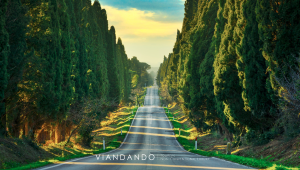Italy is home to some of the most famous cities in the world. Here are some facts and curiosities about the top three Italian cities.
Venice
The city is formed of 118 islands. The 118 islands that make up Venice are connected by around 400 bridges and over 170 canals. The city is located in the Venetian Lagoon which is a world heritage site.
Venice has the shape of a fish. People coming to Venice for the first time typically wonder how monumental buildings such as the Basilica and Campanile of San Marco can possibly hold on. Since the beginning, construction in Venice had to tackle water, salty air, mud and sand.By creating a smart system of building stilts and by preventing water leaks with mud, bricks and waste material, Venetians managed to build a cemented ground that’s been holding on for decades. During its creation, who could’ve known Venice would have the shape of a fish when seen from above?!
It’s not that easy to become a gondola rider. The Gondola is one of the most recognizable symbols of Venice and a popular attraction for tourists. However, not many people know that becoming a licensed gondola rider, or “gondolièr” is actually quite hard! These narrow boats have been used for over 10 centuries to navigate across the canals because of their odd shape, but they can only be led by skilled oarsmen, who need to go through intense training and pass a final exam. Hundreds of young men apply each year, but only 3 to 4 people manage to get the license!
Florence
Buchette del Vino. On the walls of many ancient Florentine houses, you can notice some little gaps called buchette del vino, that is holes for wine. The name comes from their past employment, which is to sell wine. This tradition, to sell wine directly on the streets, dates back to XVII century. The holes let aristocratic families sell wine with discretion, avoiding to turn to innkeepers. It had to be a common practice, since these holes are very widespread. From the gaps, it could be swapped only a bottle at a time and it came directly from the wine cellars, which were near the holes. These holes in the walls were also used for charity, in fact, the master of the house could leave a bottle of wine or some bread to needy people.
Stendhal syndrome. Stendhal Syndrome has been born in Florence and acquired the name of Florence It is the state of mind when someone becomes lightheaded or dizzy because of the outstanding art. As strange as it sounds it is really true. In the early 1800s a French author Stendhal visited Florence, he experienced dizziness and faintness when he had seen all the art of the beautiful city. It wouldn’t get so important but because in the late 1970s an Italian doctor noticed over 100 cases of the same set of symptoms of other people visiting Florence, this has been associated with the Stendhal and named the Florence Syndrome
Too beautiful to destroy. In 1938, when Benito Mussolini welcomed Hitler for a state visit, Hitler was astonished by the magnificence of Florence. He delighted in the view from the Ponte Vecchio. During World War II, Germans wrecked every one of the extensions over the Arno waterway aside from Ponte Vecchio; as Hitler called it ‘too lovely to even think about destroying.’
Rome
The Coins in The Trevi Fountain. 3.000 Euros are collected from the bottom of the Trevi Fountain every night. All this money is donated to a catholic charity, Caritas, who uses the money to help needy families in Rome.
The Colosseum was not called “The Colosseum”. At least, not when it was first built. Which was, if we’re going to use the bare numbers, between 72 and 80AD. Back then, it would have been referred to as the “Amphitheatrium Flavium”, because it was constructed by the Flavian dynasty of emperors – notably Vespasian, who started it, and Titus, who finished it. These were powerful men, so acknowledging their creation – and not just calling it “Big Thing”, as we effectively do now – was a wise move. “Colosseum” came into parlance circa 1000AD – but even then, did not directly mean the amphitheatre. It referred to an enormous statue – a colossus, even – of a former emperor (probably Nero) which stood outside, but has since vanished.
Cats have special rights. It is estimated that Rome is home to approximately 300,000 cats, and they are basically allowed to run free. A Roman law states that if at least five cats are living together, they cannot be “scatted.” This essentially gives them “squatters’ rights” to most locations in the city, including many of the ancient ruins. Cat lovers can find a large, no-kill sanctuary for cats in the Largo di Torre Argentina.



